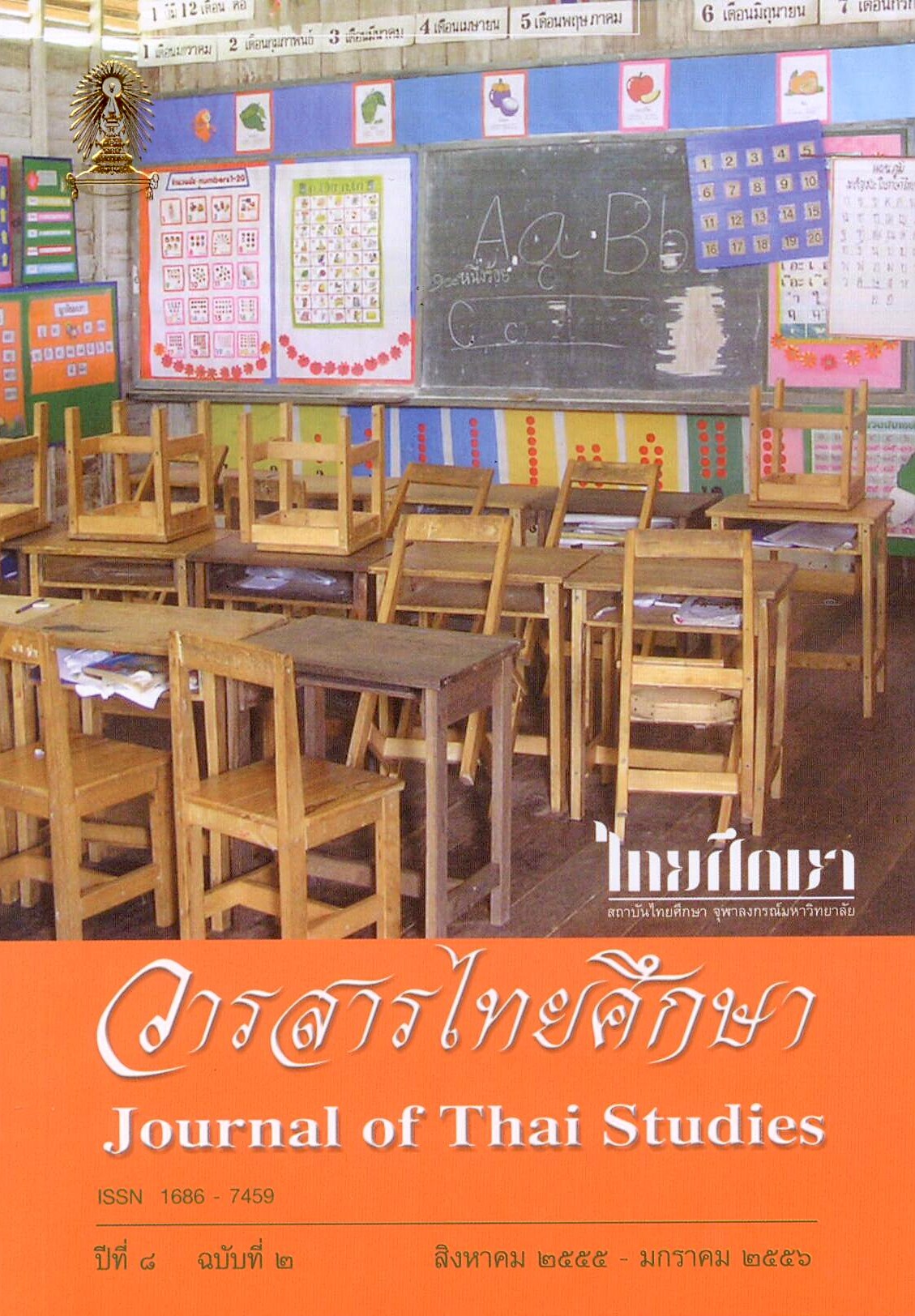“Phi Sa Oeng” Worship of the Kui at Ban La-o, Amphoe Nam Kliang, Changwat Sisaket
Main Article Content
Abstract
Phi Sa Oeng are the family lineage ancestral spirits of the Kui at Ban La-o, Amphoe Namkliang, Changwat Sisaket. Their duty is to protect and take care of their descendants. If their descendants break the custom, the spirits can cause them illness. Annually, during the third and sixth month, villagers will arrange the ancestral spirit worship in order to fulf ill their vows, thank and worship the spirits. This worship helps transmit the belief in ancestral spirits. At the same time, the worship helps to transmit the customary law of the Kui at Ban La-o, teaches descendants and unites the relationship between the people in the community. In addition, the worship helps to build spirit for individuals and can respond to the spiritual needs of individuals and build the strength of the community. These are the reasons why the worship has been practiced for a long time until the present.
Downloads
Article Details

This work is licensed under a Creative Commons Attribution-NonCommercial-NoDerivatives 4.0 International License.
Journal of Thai studies is licensed under a Creative Commons Attribution-Noncommercial-NoDerivatives4.0 Intenational (CC BY-NC-ND 4.0) licence, unless otherwise stated. Plese read our Policies page for more information on Open Access, copyright and permissions.
References
คณะกรรมการกฤษฎีกา. สํานักงาน. รัฐธรรมนูญแห่งราชอาณาจักรไทย พุทธศักราช ๒๕๔๐. [ออนไลน์]. ๒๕๕๔. แหล่งที่มา: http://web.krisdika.go.th/data/law/law1/%c306/%c306-10-2540-a0001.pdf [๒ พฤษภาคม ๒๕๕๕]
คณะกรรมการกฤษฎีกา. สํานักงาน. รัฐธรรมนูญแห่งราชอาณาจักรไทย พุทธศักราช ๒๕๕๐. [ออนไลน์]. ๒๕๕๔. แหล่งที่มา: http://web.krisdika.go.th/data/law/law1/%c306/%c306-10-9999-update.pdf [๒ พฤษภาคม ๒๕๕๕]
จิตร ภูมิศักดิ์. ความเป็นมาของคําสยาม ไทย ลาวและขอม และลักษณะทางสังคมของชนชาติฉบับสมบูรณ์. พิมพ์ครั้งที่ ๕. กรุงเทพฯ: ศยาม, ๒๕๔๔.
ธวัช ปุณโณทก. ประวัติหัวเมืองอีสานตอนล่าง. ใน สมบัติอีสานใต้ครั้งที่ ๓, ๓๕-๔๕. กรุงเทพฯ: ภาพพิมพ์, ๒๕๒๗.
นิคม วงเวียน. วัฒนธรรมส่วย (กุย) ด้านความเชื่อในจังหวัดสุรินทร์. สุรินทร์: ศูนย์วัฒนธรรมสุรินทร์, ๒๕๒๖.
ไพฑูรย์ มีกุศล. วัฒนธรรมแม่น้ำมูลเชิงชาติพันธุ์วิทยาและประวัติศาสตร์ กรณีผสมผสานกลมกลืนของชาติพันธุ์กวย เขมร และลาว. ใน วัฒนธรรมลุ่มน้ำมูล : กรณีเขมร ลาว ส่วย สุรินทร์, ๑๑๙-๑๒๕. กรุงเทพฯ: สารมวลชน, ๒๕๓๓.
ศิราพร ณ ถลาง. ทฤษฎีคติชนวิทยา วิธีวิทยาในการวิเคราะห์ตํานาน-นิทานพื้นบ้าน. กรุงเทพฯ: โครงการเผยแพร่ผลงานทางวิชาการ คณะอักษรศาสตร์ จุฬาลงกรณ์มหาวิทยาลัย, ๒๕๔๘.
สมทรง บุรุษพัฒน์. เรียนภาษาและชีวิตความเป็นอยู่ของชาวกูย-กวย(ส่วย)จากบทสนทนา. นครปฐม: สถาบันวิจัยภาษาและวัฒนธรรมเพื่อพัฒนาชนบท มหาวิทยาลัยมหิดล, ๒๕๓๗.
สุกัญญา สุจฉายา, บรรณาธิการ. พิธีกรรม ตํานาน นิทาน เพลง : บทบาทของคติชนกับสังคมไทย. กรุงเทพฯ: โครงการเผยแพร่ผลงานทางวิชาการ คณะอักษรศาสตร์ จุฬาลงกรณ์มหาวิทยาลัย, ๒๕๔๘.
Seidenfaden, Eric. The Kui People of Cambodia and Siam. Journal of Siam Society 39, Part 2 (January 1952): 61-62.
สัมภาษณ์
คําหวาย ยาเคน, ๑๓ มีนาคม ๒๕๕๓ และ ๒๘ สิงหาคม ๒๕๕๔.
ถวิล นันทะเสน, ๕ กุมภาพันธ์ ๒๕๕๓.
ทองคํา ศรีด้วง, ๒๗ กรกฎาคม ๒๕๕๓ และ ๑๕ กุมภาพันธ์ ๒๕๕๕.
ธนากร บุตะเคียน, ๒๒ ตุลาคม ๒๕๕๓ และ ๑๖ กุมภาพันธ์ ๒๕๕๕.
เมาะ สังลา, ๑๒ เมษายน ๒๕๕๓ และ ๒๐ เมษายน ๒๕๕๓ และ ๒๒ มิถุนายน ๒๕๕๓.
ส่วน นามวิชา, ๓ มกราคม ๒๕๕๔ และ ๒ มกราคม ๒๕๕๕ และ ๒ พฤษภาคม ๒๕๕๕.
สิ้ว พุทธิชน, ๒๗ กรกฎาคม ๒๕๕๓.
แสน ศรีปัตเนตร, ๑๒ เมษายน ๒๕๕๔.
หม่อม นามวิชา, ๑๐ กุมภาพันธ์ ๒๕๕๔.


